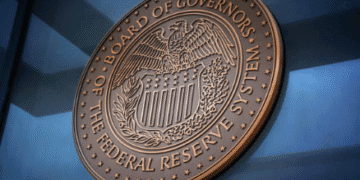Athira Sethu
Kochi, 20 May 2025
U.S. financial markets saw stress at the beginning of this week following the reduction of the U.S. government’s credit rating by a leading credit agency, Moody’s Ratings. Moody’s reduced the rating to Aa1 from Aaa (the highest) on Friday, stating the U.S. budget deficit is too big and not decreasing. The agency accused many years of overspending by Republican and Democratic administrations.
This downgrade makes the U.S. government slightly less credible in repaying its debt. Markets responded immediately. In initial Asian trading, U.S. stock futures declined, the U.S. currency dropped, and long-term U.S. Treasury bond yields (interest rates) increased.
The 10-year U.S. Treasury yield increased to around 4.50% on Monday, and the 30-year rose to 4.99%. If the 30-year rate reached 5%, it will reach levels seen in 2023, when it reached a high of 5.18%, the most since 2007.
Analysts explain that this step wasn’t unexpected. Max Gokhman, a finance expert, explained that the U.S. is spending too much money that it doesn’t have, and this will drive debt more expensive. If large investors begin to withdraw their funds from U.S. bonds and invest them elsewhere, this might result in even more expensive interest rates down the line. That would also result in the U.S. dollar being weaker and U.S. equities less appealing.
Typically, when interest rates increase, the U.S. dollar appreciates. But this time, investors are more concerned about the U.S. debt crisis.
Earlier this year, markets also faced challenges when President Trump introduced new tariffs, making investors reevaluate their investments. Although some tranquility prevailed after tariffs were suspended, most investors are still concerned with the U.S. government’s expenditure and debt problems.





















